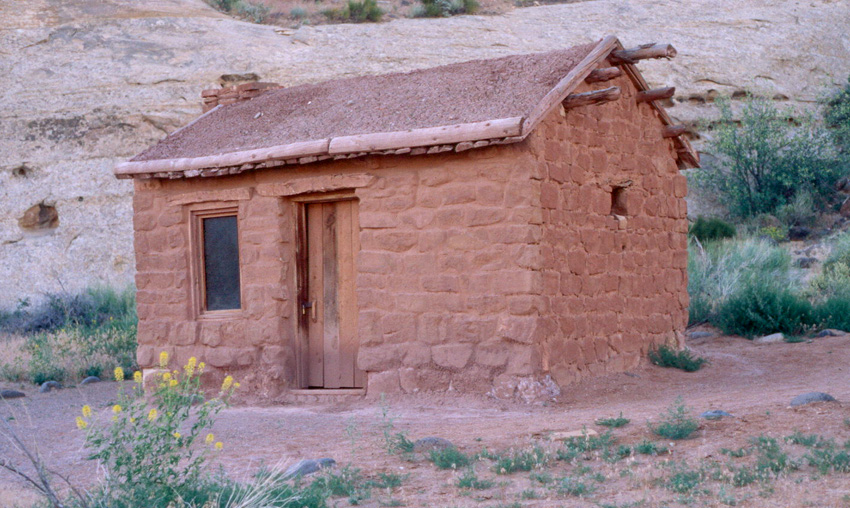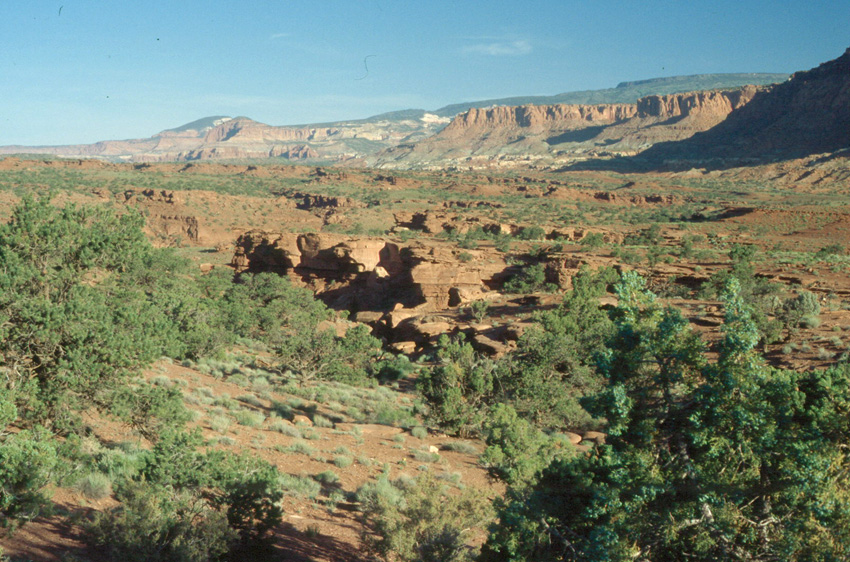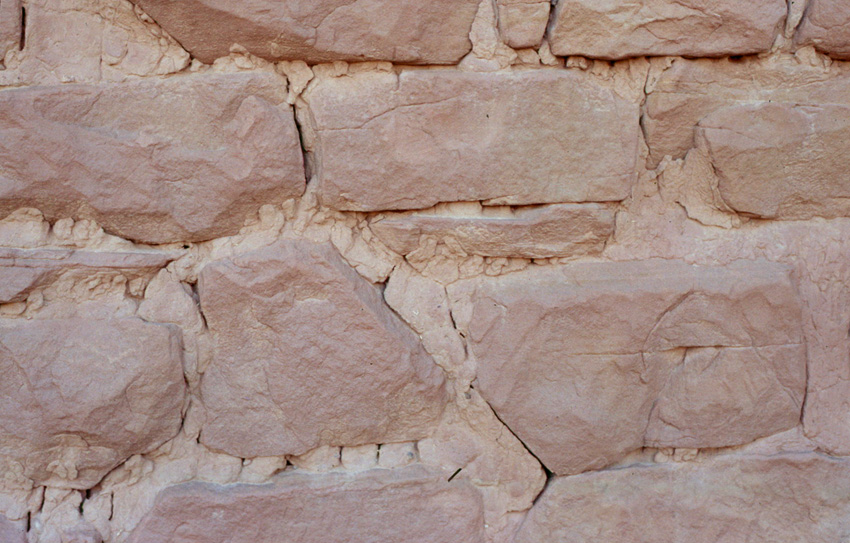|
|
|
|
|
One icon of the European settlement of the United State was the log cabin - Daniel Boone's log cabin, the log cabin in which Abraham Lincoln was raised, and log cabins built by pioneers and settlers all across America. In some places, there weren't many logs, and so sod houses were built on the prairies. For one family in southern Utah, where there was little wood, the answer was a stone cabin.
|
|
|

|
|
|
|
The stone cabin above was built by Elijah Cutler Behunin and his family in 1882 when they settled on the narrow floodplain of the Fremont River in southern Utah. They lived near Fruita, where Mormons were settling and establishing orchards that gave the area its name. With little wood at hand, the Behunins, a family of ten, built a tiny home out of sandstone.
Stone was certainly abundant, as the Fremont River had cut a gorge through the Jurassic Navaho and Wingate sandstones and Triassic Chinle sandstone and mudstones. The view below comes from farther up the valley; all the rock visible is sandstone and shale.
|
|
|

|
|
|
|
The local environment provided stone, but it didn't provide much for mortar. The blocks appear to have been mortared with mud, probably from the Chinle. The blobs of muddy mortar resemble the mortar-work executed by the Ancestral Pueblo (or Anasazi) builders at Mesa Verde, where they faced the same problem and likewise solved it with mud from an underlying shale.
|
|
|

|
|
|
|
The Behunins' cabin still stands, but they soon abandoned it because of the Fremont River's floods. Today the cabin is flanked by Utah Highway 24 in the present Capitol Reef National Park, standing as a monument to the resourcefulness of some hardy pioneers.
|


